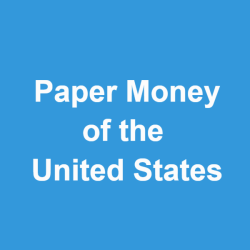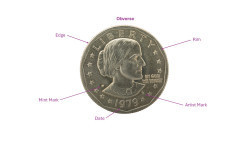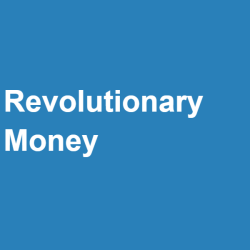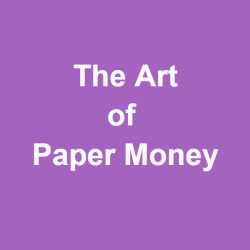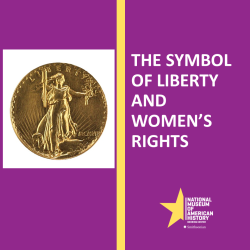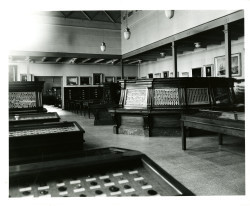Jennifer Gloede
Museum Specialist
National Museum of American History
I serve as the collections manager for the National Numismatic Collection at the National Museum of American History.
The collections under my name have been developed collaboratively with Ellen Feingold, curator of the National Numismatic Collection, and others.
Jennifer Gloede's collections
Collector and Staff Picks: the Josiah K. Lilly Jr. and Paul A. Straub coin collections
<p>The <a href="https://americanhistory.si.edu/national-numismatic-collection">National Numismatic Collection</a> (NNC) is America’s collection of monetary and transactional objects. It includes the famous coin collections of <a href="https://americanhistory.si.edu/collections/search?edan_q=lilly%20collection&edan_local=1&edan_fq%5b%5d=topic:%22Josiah+K.+Lilly+Jr.+Collection%22">Josiah K. Lilly Jr</a>. and <a href="https://americanhistory.si.edu/collections/search?edan_q=&edan_fq%5b%5d=set_name:%22Paul+A.+Straub+Collection%22&custom_search_id=collections-search">Paul A. Straub</a>. Both of these prolific collectors amassed extraordinary collections that have inspired an appreciation of coins in many others.</p>
<p></p>
<p>We asked the Friends of the NNC and NNC staff members to choose some of their favorite objects from these collections. Each object below is annotated with a note about who chose the coin and why they think it is an outstanding object.</p>
<p></p>
<p>To learn more about numismatics and coin collecting, we encourage you to continue to explore Learning Lab and see the links below.</p>
<ul><li>National Numismatic Collection, <a href="https://americanhistory.si.edu/national-numismatic-collection/education">Education web page</a></li><li>National Numismatic Collection, <a href="https://americanhistory.si.edu/collections/object-groups/national-numismatic-collection">Object group</a></li><li>National Museum of American History, <a href="https://americanhistory.si.edu/blog?term_node_tid_depth=109">Numismatic blog posts</a></li><li>United States Mint, <a href="https://www.usmint.gov/learn?action=learn">Learn</a></li><li>Bureau of Engraving and Printing, <a href="https://www.uscurrency.gov/">U.S. Currency Education Program</a></li><li>American Numismatic Association, <a href="https://www.money.org/getting-started">Getting Started</a></li></ul>
 Jennifer Gloede
Jennifer Gloede
8
Messages of Democracy and Nationhood on American Money
<p></p>
<p>The ability of money to carry and communicate messages makes it a valuable source for learning about past and present cultures and history. The denomination, or monetary value, on money is often the most prominent message, but it is rarely the only message. Through images and text, governments use money to make political and cultural statements about a nation’s identity, leadership, heritage, and values. </p>
<p>American money includes many depictions of national ideals and nationhood. Over the past two centuries, American coins and banknotes have featured powerful imagery invoking the democratic ideals of liberty and justice, as well as the founding principles of unity and independence. </p>
<p></p>
<p></p>
<p></p>
 Jennifer Gloede
Jennifer Gloede
14
Money and the Civil War
<p>Money is a powerful source for understanding the Civil War. The banknotes of that era reflect the differing values and perspectives of the political and military leadership in the North and South. </p>
<p>Prior to the Civil War, states issued charters to private banknotes and businesses allowing them to make their own banknotes. At the beginning of the Civil War, the U.S. government issued federal notes, often called <em>greenbacks</em>, to pay for the war. These notes feature images depicting core principles of democracy, such as liberty. The government of the Confederate States of America also issued its own paper money depicting Confederate leadership and scenes from life in the South, including painful images of slavery. The difference in messages on the notes reflects the division between the northern and southern regions of the U.S. during the Civil War.</p>
<ul></ul>
<p><br></p>
 Jennifer Gloede
Jennifer Gloede
18
Russian Coinage and Grand Duke Georgii Mikhailovich
<p>The Grand Duke Georgii Mikhailovich collection of approximately 13,000 Russian coins and medals is among the most comprehensive Russian numismatic collections outside of Russia. Mikhailovich had a lifelong commitment to collecting and documenting Russian coinage and published extensively on the topic. Following the Russian Revolution, Mikhailovich was executed in 1919. His wife and daughters went into exile and eventually sold the collection at auction. It changed hands a number of times before it was purchased by Lammot du Pont, whose son donated it to the National Numismatic Collection in the 1950s. This collection is a rich resource for the study of Russia, Europe, and numismatics more broadly.</p>
<p> </p>
<p>A small portion of the Mikhailovich collection was displayed in <a href="http://americanhistory.si.edu/exhibitions/value-money"><em>The Value of Money </em>exhibition</a> at the National Museum of American History.</p>
<p><br></p>
<p>Text adapted from <a href="https://scholarlypress.si.edu/store/history-american-culture/value-of-money/"><em>The Value of Money</em></a> by Ellen R. Feingold, Smithsonian Institution Scholarly Press, 2015.</p>
 Jennifer Gloede
Jennifer Gloede
35
The Art of Paper Money
<p>American banknotes currently have a standardized design, but they were once canvases for a diverse body of beautiful and creative artwork. During the second half of the 19th century, U.S. federal banknotes featured colorful designs with inspiring figures, moving scenes, and unexpected details. This Learning Lab includes highlights from the U.S. Department of the Treasury’s collection of banknotes, which are now part of the Smithsonian’s National Numismatic Collection. Together they demonstrate the skill of the artists and engravers who created the notes, and the beauty of American currency in the 19th and early 20th century. </p>
<p></p>
 Jennifer Gloede
Jennifer Gloede
18
The Symbol of Liberty and Women’s Rights
<p>Lady Liberty is a familiar allegorical figure who represents the concept of freedom. She appeared on America’s earliest federal coins beginning in 1793 and continued to be featured on U.S. coins throughout the 19th century. During that time, American women were not full citizens and actively fought for equal rights. Using money as a medium, this learning lab collection demonstrates the paradox of using a woman's image as a symbol for freedom, while denying real women the opportunities and rights given to male citizens. </p>
<p>This learning lab features objects from the Smithsonian's National Numismatic Collection and is adapted from a scholarly paper titled “Liberty and the 19th Amendment" written by Mary N. Lannin and presented at the International Numismatic Congress XVI in Warsaw, Poland, September 2022. Full scholarly citations will be available in the proceedings published by the International Numismatic Congress.<br></p>
<p>Mary N. Lannin is scholar of numismatics and has served in several leadership roles in the field including chairperson of the United States Mint’s Citizens Coinage Advisory Committee and trustee of the American Numismatic Society. She is a member of numismatic clubs in both the United States and in Europe. Her research focuses on the history and background of the women behind money–whether they are collectors, sculptor-engravers, or the subject of the coin or medal. </p>
<p>For additional information on the National Numismatic Collection, please email us at: NMAH-NNC@si.edu.</p>
 Jennifer Gloede
Jennifer Gloede
29



